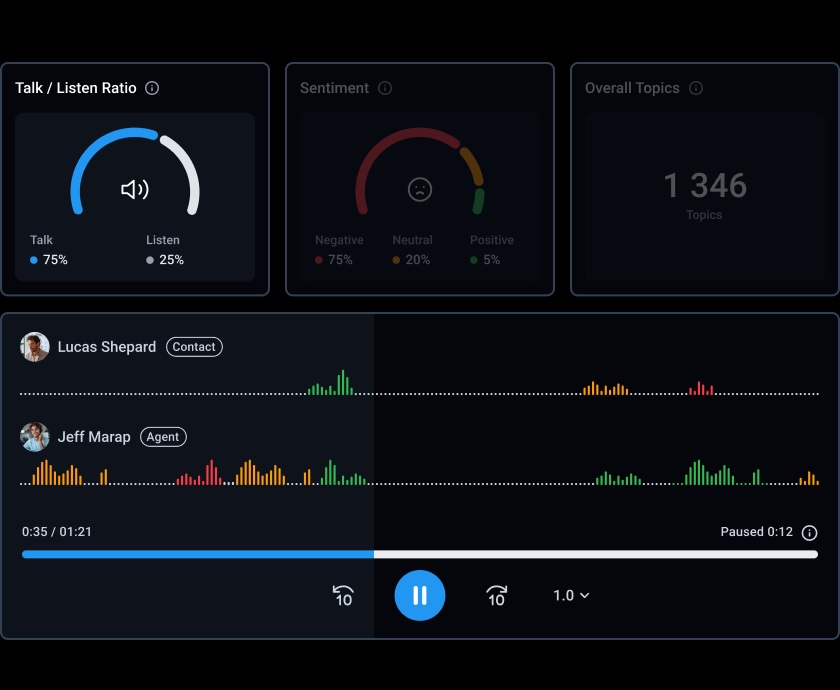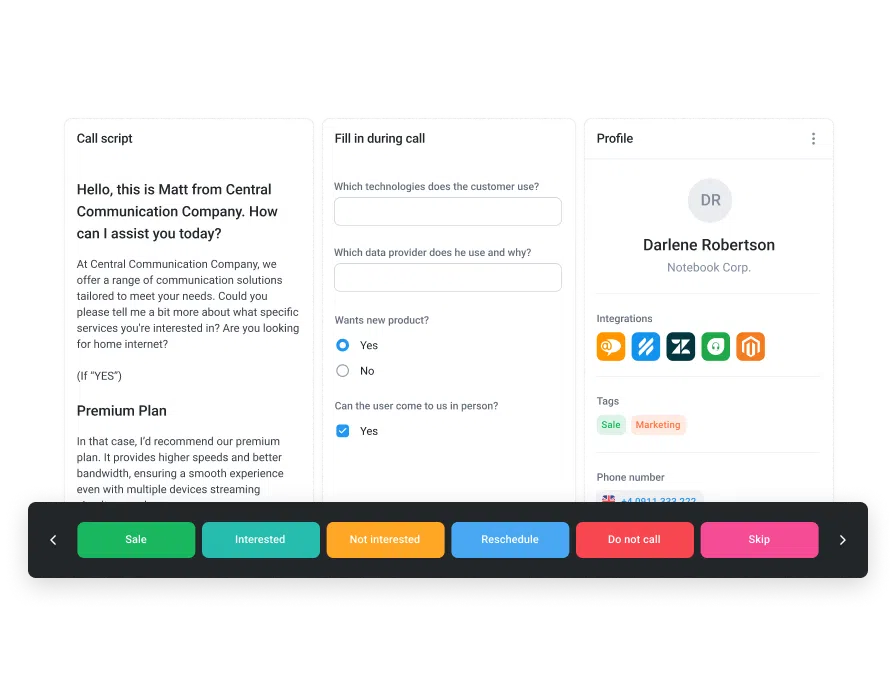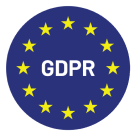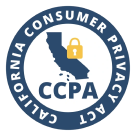Pre-Call Planning Template For Outbound Sales Teams
Lena stared at her screen, trying to shake the nerves before her next call. She had a solid product, and a decent understanding of the client’s industry, but every time she dialed, she felt like she was stepping into the unknown.
A client’s unexpected objection could derail the entire conversation, leaving her scrambling for a response. And she wasn’t alone—only 11% of sales professionals feel confident in customer calls.*
That’s when she discovered pre-call planning. By researching prospects thoroughly, anticipating objections, and crafting a structured approach, Lena’s calls became smoother, more productive, and—most importantly—more successful. She didn’t just wing it anymore; she went in prepared, confident, and ready to turn conversations into conversions.
Let’s walk through the steps that helped Lena transform her sales approach, along with a free pre-call planning template to guide your team toward more effective outreach.
Key Takeaways:
- Thorough pre-call planning allows sales reps to approach conversations more effectively by allowing them to handle objections in advance and align products with customer needs.
- A strategic approach to conversations can build trust quickly; by conveying that you understand pain points you can position yourself as a trustworthy partner.
- CloudTalk can support the call planning process by integrating client information into the call process and enabling strategy refinement based on past conversations and CRM data.
Set sales up for success with the right insights to convert leads
What is Pre-Call Planning?
Pre-call planning is the process of planning your approach before a sales call. Broadly speaking, the process involves setting clear objectives for the call, and then researching the prospect’s background to lay out a clear plan to fulfill them. This preparation sets the foundation for engaging and relevant conversations, giving reps the context they need to align an offer with the unique needs of the client.
For reps like Lena, this process reduced the stress of handling objections on the fly and helped establish meaningful connections from the first interaction. Instead of reacting to objections as they arose, she proactively addressed them, demonstrating expertise and building trust with prospects.
Pre-call planning is often used as an approach with high-value calls and isn’t always necessary for volume-based calls like cold calls where the time versus potential reward doesn’t merit the same preparation.
Why Pre-Call Planning Templates Are Essential for Strong Sales
Lena’s breakthrough came when she implemented a structured pre-call planning template. Here’s how it transformed her sales game:
- Boosts confidence: The uncertainty of an important sales call can be a real anxiety inducer. Sales reps who are well prepared will be able to go into communications much more reassured, leading to more effective and persuasive conversations.
- Improves productivity: Focusing time on high-value prospects with dedicated planning cuts down on unsuccessful calls. This quality-over-quantity approach increases the overall effectiveness of outreach even if call volume is sacrificed for the pre-call planning phase.
- Increases close rates: Pre-call planning allows you to align your offering with the specific needs or pain points of a prospective client. Instead of trying to connect dots on the fly, reps can proactively handle objections and close more deals.
- Builds rapport more quickly: By personalizing your outreach efforts before the call is even made, prospects are immediately shown that you’re committed to understanding their business. This fosters trust and establishes a positive relationship straight away.
- Reduces uncertainties: Having prepared responses for likely objections eliminates surprises during the call. Let’s say your solution only has 8 of the 10 features the client is looking for. Pre-call planning allows reps to have a predetermined approach to explaining why the 2 missing features aren’t necessary.
- Enhances professionalism: A structured pre-call plan shows your business takes a professional approach to outreach and separates you from competition who might be making cold-calls with less research or context.
Without a pre-call planning template, reps enter calls with no structured processes to deal with difficult questions. This means they can end up with a generalized opening that’s unlikely to garner interest, face embarrassing moments that highlight a lack of research, and miss opportunities to leverage information gained previously with the client.
Even information like ‘we aren’t interested because of X’ is crucial, and not tailoring the call to address this historic interaction looks sloppy. Sales scripts and templates guide reps through key steps to ensure each call is focused, relevant, and impactful.
Pro tip
Pro tip: Give reps the context they need to personalize sales with a dialer that links to your CRM.
Key Elements of a Successful Pre-Call Sales Plan
Successful sales calls don’t just happen—they’re the result of careful preparation. Lena learned this the hard way, realizing that winging it led to awkward pauses and missed opportunities. By following a structured approach to pre-call planning, she was able to anticipate objections, build rapport faster, and position her product more effectively.
Here’s how she did it, broken down into six essential steps:
Research the Prospect
The first fundamental step of pre-call planning is understanding the key differentiators that are unique to the client and their business.
Start by looking at the company website and social media like the client’s LinkedIn page. Understanding their professional background and role within the organization can help you understand the challenges they’re likely to face.
Meanwhile, understanding their business can offer insights into their mission and values, allowing reps to align your offering with fulfilling key strategic objectives. This means you can position products based on the tangible value they add.
You can take this approach a step further by staying up to date on the company’s recent developments including product launches, partnerships, or expansions. These insights can provide the framework for a personalized conversation opener that immediately shows the client you understand them and their work.
There’s no need to limit this research to the immediate orbit of the prospect. Think outside the box here by looking at areas like research trends, regulatory changes, and other factors likely to impact their operations.
Let’s say you offer a data management platform and your audience has just found out that new regulations will require them to collect new data from third parties. You could then highlight how your platform addresses these concerns.
Finally, don’t forget to leverage your own previous experience with the prospect. Modern tools like automatic Call Recording can be used to listen to past sales conversations, allowing you to note recurring themes, objections, or pain points to zero in on and address during the next round of communications.
Set Clear Objectives for the Call
With the client extensively researched, it’s time to outline the specific goals of the call to keep the conversation focused and purposeful.
Start with the desired outcome of the call. Common outcomes will usually be objectives like booking a demo or scheduling a formal meeting.
Secondary goals like learning more about the decision-making process or identifying other key stakeholders are equally important because they allow you to obtain information that could be valuable down the line. For example, if you’re selling to an HR leader, but are about to launch solutions for the Data team, then uncovering who has purchasing power in Business Intelligence is a huge win.
With the primary and secondary objectives set, it’s a good idea to segment your plan for the conversation to make sure you’ve covered all key points. However, remember that this should only serve as a guide as reps should never sacrifice meaningful conversation to ‘tick off’ a secondary objective.
Craft a Tailored Opening
Almost everything is personalized nowadays, so generic openings can instantly turn prospects off.
Use the information gathered in your research phase to develop icebreakers or introductory statements that resonate with the prospects’ business interests. For example, you could reference industry research they shared or congratulate them on a professional milestone.
This should pave the way for your team to clearly articulate the value proposition of your product or service; this can be bolstered with social proof to ease the transition between opening and starting the pitch itself.
Prepare Discovery Questions
Just like how your research should guide the creation of a personalized opening, your primary and secondary objectives should lay the foundation for discovery questions.
Asking the right questions helps you understand the prospect’s needs and position your offering as the best solution.
Your pre-call plan should outline the types of questions that need to be asked, leaning towards open-ended questions that encourage the prospect to share their challenges and goals.
These can be as simple as: “Can you describe the biggest challenge your team is currently facing? Or, “What are your top priorities for this quarter?”. Both of these questions shift the onus to the prospect to reveal key information that can help to tailor the rest of the call.
You can then have pre-prepared follow-up questions, such as what they’re doing to address a described problem and how well the current solution is working. This opens the door for flowing two-way conversations, letting reps balance the need for information with their own insights or examples from working with other clients.
However, achieving a conversational balance can be difficult to achieve without a clear plan, resulting in one-sided conversations.
Modern Sentiment Analysis can help to identify and resolve this issue, with metrics like Talk/Listen Ratio allowing call center managers to see the balance of both ongoing and historic calls. It can also show you the sentiment of customers during calls, flagging any discovery questions that are eliciting negative responses.

Address Objections Proactively
As we’ve mentioned, anticipating and preparing for potential objections is one of the most important benefits of pre-call planning. The ability of reps to respond confidently and keep the conversation on track can be the difference between a booked demo and a ‘sorry, not interested’.
Start by using your research to identify the most likely objections. These might be concerns about budget constraints, timing issues, or the prospect’s perceived lack of need for your services.
You can then integrate reframing techniques into your strategy. For example, if the client has concerns around the time-to-implement, your reps could highlight the cumulative saved time your solution provides long-term.
You can also integrate these objection-handling techniques into the actual workflow used to make the call. CloudTalk Call Scripts let you set up standardized responses to common objections within the call screen. These can then be personalized by reps on the fly based on different conversational contexts.

Leverage CRM Data Effectively
Utilizing the data held in your customer relationship management (CRM) platform is key to gaining a comprehensive understanding of your business’s history with the prospect.
CRM systems should act as a single source of truth for client information, allowing you to review past interactions, engagement levels, and sentiments when planning.

This data should be used to support the research phase. For example, instead of needing to speak to the last person who engaged the prospect, call notes held within your CRM can be used to understand how historic interactions looked.
Your CRM should also be able to show previous purchase history, emails, or meetings to understand the prospect’s journey and ensure unnecessary information isn’t repeated.
However, you shouldn’t only use the data in your CRM system in the pre-call planning phase. Modern calling solutions also allow CRM data to be visible during calls. For example, CloudTalk’s integrations allow for seamless synchronization with leading CRMs like Salesforce and Hubspot.
This allows reps to see key CRM data or even the structure of your pre-call plan, within the calling window. This integration also automatically cords call notes in your CRM system, minimizing admin and making pre-call planning easier in the future.
Pre-Call Planning Template
Just like Lena, your team can improve their calls with a structured checklist. Use this framework to guide your pre-call process:
Make Every Call a Personal Win
70% of sales reps site objection-handling as their biggest challenge when taking customer calls.* But with the pre-call planning methods and the right tools to support them, your team can gain confidence and boost conversions.
If you’re like Lena, you’ll realize pre-call planning isn’t just about ticking boxes—it’s about creating a seamless sales experience where each call has purpose and direction. By refining her outreach with strategic research, clear goals, and thoughtful discovery questions, Lena turned uncertainty into opportunity. Every rejection became a learning experience, every call a step closer to closing the deal.
Plus, CloudTalk’s powerful dialer integrates with your CRM to empower reps with more client information during calls. Meanwhile, Call Recording and advanced Analytics let you see how your pre-call plan is working in action.
Set sales up for success with the right insights to convert leads
*Sources:
- Salesroom, The State of Sales, 2024
FAQs about pre-call planning templates
What is pre-call planning?
Pre-call planning is the process of researching your prospects and setting out a clear action plan to achieve the desired outcome of the call.
Where can I find a free pre-call planning worksheet?
You can download our free pre-call planning checklist straight from this article for a practical worksheet with key considerations included.
























